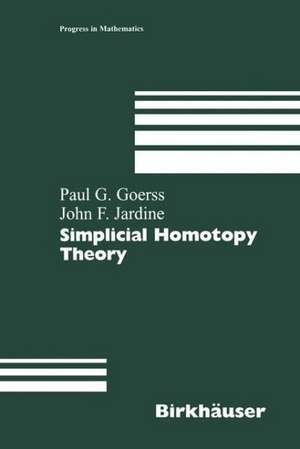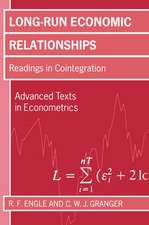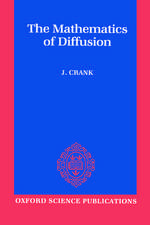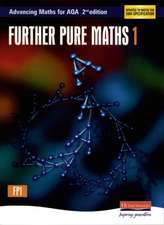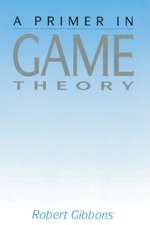Simplicial Homotopy Theory: Progress in Mathematics, cartea 174
Autor Paul G. Goerss, John F. Jardineen Limba Engleză Paperback – 14 oct 2012
Discussed here are the homotopy theory of simplicial sets, and other basic topics such as simplicial groups, Postnikov towers, and bisimplicial sets. The more advanced material includes homotopy limits and colimits, localization with respect to a map and with respect to a homology theory, cosimplicial spaces, and homotopy coherence. Interspersed throughout are many results and ideas well-known to experts, but uncollected in the literature.
Intended for second-year graduate students and beyond, this book introduces many of the basic tools of modern homotopy theory. An extensive background in topology is not assumed.
Reviews:
"… a book filling an obvious gap in the literature and the authors have done an excellent job on it. No monograph or expository paper has been published on this topic in the last twenty-eight years." - Analele Universitatii din Timisoara
"… is clearly presented and a brief summary preceding every chapter is useful to the reader. The book should prove enlightening to a broad range of readers including prospective students and researchers who want to apply simplicial techniques for whatever reason." - Zentralblatt MATH
"… they succeed. The book is an excellent account of simplicial homotopy theory from a modern point of view […] The bookis well written. […] The book can be highly recommended to anybody who wants to learn and to apply simplicial techniques and/or the theory of (simplicial) closed model categories." - Mathematical Reviews
| Toate formatele și edițiile | Preț | Express |
|---|---|---|
| Paperback (2) | 737.89 lei 43-57 zile | |
| Birkhäuser Basel – 14 oct 2012 | 737.89 lei 43-57 zile | |
| Birkhäuser Basel – 2 oct 2009 | 900.94 lei 43-57 zile |
Din seria Progress in Mathematics
- 24%
 Preț: 691.37 lei
Preț: 691.37 lei - 24%
 Preț: 740.80 lei
Preț: 740.80 lei - 9%
 Preț: 763.33 lei
Preț: 763.33 lei -
 Preț: 308.20 lei
Preț: 308.20 lei - 20%
 Preț: 695.88 lei
Preț: 695.88 lei -
 Preț: 362.51 lei
Preț: 362.51 lei -
 Preț: 308.13 lei
Preț: 308.13 lei - 18%
 Preț: 749.27 lei
Preț: 749.27 lei - 9%
 Preț: 766.42 lei
Preț: 766.42 lei - 20%
 Preț: 631.09 lei
Preț: 631.09 lei - 24%
 Preț: 638.88 lei
Preț: 638.88 lei - 15%
 Preț: 580.82 lei
Preț: 580.82 lei -
 Preț: 392.37 lei
Preț: 392.37 lei -
 Preț: 395.09 lei
Preț: 395.09 lei -
 Preț: 390.25 lei
Preț: 390.25 lei -
 Preț: 376.80 lei
Preț: 376.80 lei - 18%
 Preț: 729.53 lei
Preț: 729.53 lei - 15%
 Preț: 652.49 lei
Preț: 652.49 lei - 15%
 Preț: 649.22 lei
Preț: 649.22 lei - 18%
 Preț: 897.95 lei
Preț: 897.95 lei -
 Preț: 385.08 lei
Preț: 385.08 lei -
 Preț: 391.02 lei
Preț: 391.02 lei -
 Preț: 378.54 lei
Preț: 378.54 lei - 15%
 Preț: 531.59 lei
Preț: 531.59 lei - 15%
 Preț: 642.83 lei
Preț: 642.83 lei - 15%
 Preț: 650.69 lei
Preț: 650.69 lei -
 Preț: 381.21 lei
Preț: 381.21 lei -
 Preț: 392.37 lei
Preț: 392.37 lei -
 Preț: 398.53 lei
Preț: 398.53 lei - 15%
 Preț: 699.28 lei
Preț: 699.28 lei -
 Preț: 416.92 lei
Preț: 416.92 lei -
 Preț: 385.84 lei
Preț: 385.84 lei - 18%
 Preț: 902.65 lei
Preț: 902.65 lei - 18%
 Preț: 802.28 lei
Preț: 802.28 lei - 15%
 Preț: 640.06 lei
Preț: 640.06 lei - 18%
 Preț: 1129.83 lei
Preț: 1129.83 lei
Preț: 737.89 lei
Preț vechi: 899.86 lei
-18% Nou
Puncte Express: 1107
Preț estimativ în valută:
141.24€ • 153.47$ • 118.72£
141.24€ • 153.47$ • 118.72£
Carte tipărită la comandă
Livrare economică 21 aprilie-05 mai
Preluare comenzi: 021 569.72.76
Specificații
ISBN-13: 9783034897372
ISBN-10: 3034897375
Pagini: 532
Ilustrații: XV, 510 p.
Dimensiuni: 155 x 235 x 28 mm
Greutate: 0.74 kg
Ediția:Softcover reprint of the original 1st ed. 1999
Editura: Birkhäuser Basel
Colecția Birkhäuser
Seria Progress in Mathematics
Locul publicării:Basel, Switzerland
ISBN-10: 3034897375
Pagini: 532
Ilustrații: XV, 510 p.
Dimensiuni: 155 x 235 x 28 mm
Greutate: 0.74 kg
Ediția:Softcover reprint of the original 1st ed. 1999
Editura: Birkhäuser Basel
Colecția Birkhäuser
Seria Progress in Mathematics
Locul publicării:Basel, Switzerland
Public țintă
ResearchCuprins
I Simplicial sets.- 1. Basic definitions.- 2. Realization.- 3. Kan complexes.- 4. Anodyne extensions.- 5. Function complexes.- 6. Simplicial homotopy.- 7. Simplicial homotopy groups.- 8. Fundamental groupoid.- 9. Categories of fibrant objects.- 10. Minimal fibrations.- 11. The closed model structure.- II Model Categories.- 1. Homotopical algebra.- 2. Simplicial categories.- 3. Simplicial model categories.- 4. The existence of simplicial model category structures.- 5. Examples of simplicial model categories.- 6. A generalization of Theorem 4.1.- 7. Quillen’s total derived functor theorem.- 8. Homotopy cartesian diagrams.- III Classical results and constructions.- 1. The fundamental groupoid, revisited.- 2. Simplicial abelian groups.- 3. The Hurewicz map.- 4. The Ex? functor.- 5. The Kan suspension.- IV Bisimplicial sets.- 1. Bisimplicial sets: first properties.- 2. Bisimplicial abelian groups.- 3. Closed model structures for bisimplicial sets.- 4. The Bousfield-Friedlander theorem.- 5. Theorem B and group completion.- V Simplicial groups.- 1. Skeleta.- 2. Principal fibrations I: simplicial G-spaces.- 3. Principal fibrations II: classifications.- 4. Universal cocycles and$$ \bar W $$G.- 5. The loop group construction.- 6. Reduced simplicial sets, Milnor’s FK-construction.- 7. Simplicial groupoids.- VI The homotopy theory of towers.- 1. A model category structure for towers of spaces.- 2. The spectral sequence of a tower of fibrations.- 3. Postnikov towers.- 4. Local coefficients and equivariant cohomology.- 5. On k-invariants.- 6. Nilpotent spaces.- VII Reedy model categories.- 1. Decomposition of simplicial objects.- 2. Reedy model category structures.- 3. Geometric realization.- 4. Cosimplicial spaces.- VIII Cosimplicial spaces: applications.- 1. The homotopyspectral sequence of a cosimplicial space.- 2. Homotopy inverse limits.- 3. Completions.- 4. Obstruction theory.- IX Simplicial functors and homotopy coherence.- 1. Simplicial functors.- 2. The Dwyer-Kan theorem.- 3. Homotopy coherence.- 4. Realization theorems.- X Localization.- 1. Localization with respect to a map.- 2. The closed model category structure.- 3. Bousfield localization.- 4. A model for the stable homotopy category.- References.
Caracteristici
Includes supplementary material: sn.pub/extras
Recenzii
From reviews:
"… a book filling an obvious gap in the literature and the authors have done an excellent job on it. No monograph or expository paper has been published on this topic in the last twenty-eight years." - Analele Universitatii din Timisoara
"… is clearly presented and a brief summary preceding every chapter is useful to the reader. The book should prove enlightening to a broad range of readers including prospective students and researchers who want to apply simplicial techniques for whatever reason." - Zentralblatt MATH
"… they succeed. The book is an excellent account of simplicial homotopy theory from a modern point of view […] The book is well written. […] The book can be highly recommended to anybody who wants to learn and to apply simplicial techniques and/or the theory of (simplicial) closed model categories." - Mathematical Reviews
"… a book filling an obvious gap in the literature and the authors have done an excellent job on it. No monograph or expository paper has been published on this topic in the last twenty-eight years." - Analele Universitatii din Timisoara
"… is clearly presented and a brief summary preceding every chapter is useful to the reader. The book should prove enlightening to a broad range of readers including prospective students and researchers who want to apply simplicial techniques for whatever reason." - Zentralblatt MATH
"… they succeed. The book is an excellent account of simplicial homotopy theory from a modern point of view […] The book is well written. […] The book can be highly recommended to anybody who wants to learn and to apply simplicial techniques and/or the theory of (simplicial) closed model categories." - Mathematical Reviews
